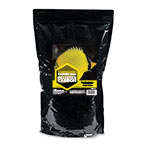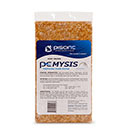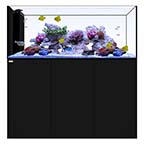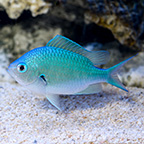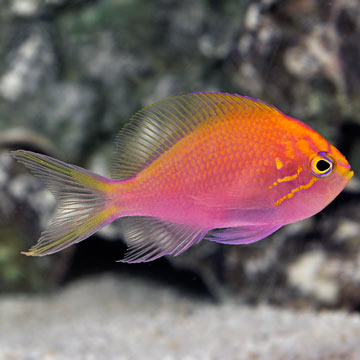
Additional locales and sizes may be available!
Additional locales and sizes may be available! Email me when availableQuick Stats
What do these Quick Stats mean? Click here for more information
What do these Quick Stats mean? Click here for more information
Overview
The Fathead Sunburst Anthias prefers to live at the bottom of the tank, so the deeper the better, but still maintain plenty of surface area for proper water oxygenation. An environment of low-to-moderate light with lots of hiding places is ideal. It is best housed with peaceful tankmates such as gobies. If keeping more than one, it is ideal to introduce all anthias at the same time.
Anthias species all share the trait of being hermaphroditic. If a dominant male perishes, the largest female of the group will often morph to take its place.
Once acclimated to a new aquarium, anthias do best when fed a varied diet of frozen mysis shrimp, enriched >frozen brine shrimp, and over time may eat high-quality flake foods offered in small quantities throughout the day. An attached refugium cultivating copepods and amphipods provides a steady supply of nutritious live food sure to keep this active planktivore content.
Approximate Purchase Size: Small: 1" to 2"; Medium: 2" to 3"; Large: 3" to 4"





